Garden landscape design: how to decorate your site?

On the eve of spring, for experienced summer residents and beginners, the problems of preparing the dacha and the site for the warm season become relevant. Some people think about how to ventilate the house after winter, others - when to start preparing seedlings. But absolutely everyone is wondering how to arrange your site. This question is not at all idle.
On the one hand, the aesthetic component is important, since the dacha is a place of rest. On the other hand, the design of the garden requires the correct placement of plants on the site. Light-loving - in the sun, shade-loving - in the shade of trees or buildings. Then the flowers will delight with their lush decoration, and you can harvest a good harvest from the beds. Knowing the basics of landscape design helps to determine the decision on many issues.
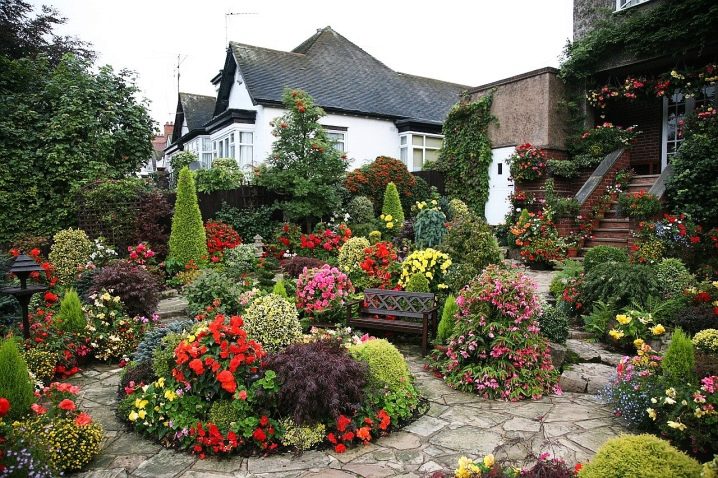
Design features
Garden decoration is a long and laborious process. Requires a serious approach and adherence to the sequence of actions. They always start by choosing a place for him on the site. The right solution will ensure the beauty, ease of care and fruiting of plants. Taken into account: light, soil quality, proximity to buildings and much more.
Having decided on the location, they proceed to the development of the project. It can be of different difficulty levels. If the site is not the first year, it has all the buildings, green spaces appear regularly, then all the efforts and finances can be spent on the design of the garden.
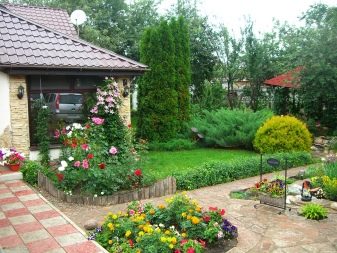

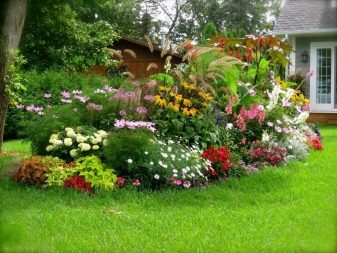
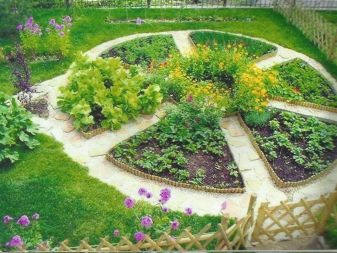
A more difficult situation is when a plot has just been purchased from other owners, and it must be fully adapted to suit your tastes and needs.
The most difficult task in terms of time and financial investments is “bare” land, on which not a single object has been erected. However, there is a plus. Such a site is a blank slate for a designer, and any fantasy can be realized on it.
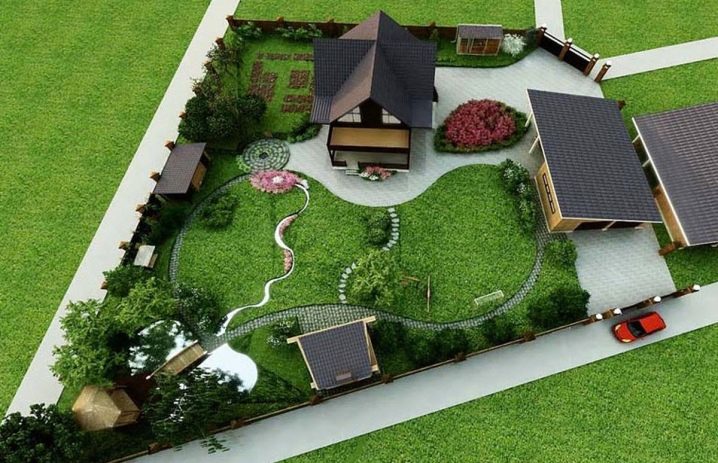
Regardless of the complexity of the project - whether the suburban area is being filled from scratch or it is a redesign, the layout should take into account the features, advantages and disadvantages of the land plot.
Square
Obviously, on a plot of 6-8 acres you will not particularly roam.
It is important to use various landscape design techniques to save space and visually increase it.
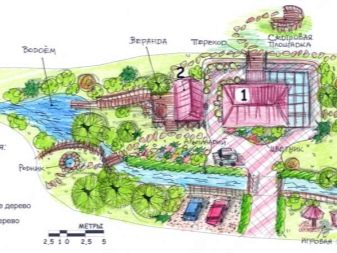
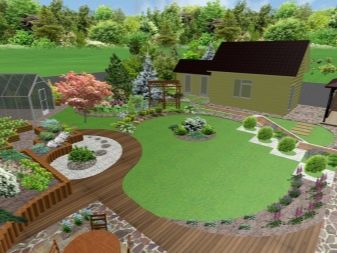
Plot shape
It can be square, rectangular, narrow and long, triangular or L-shaped. The design of each of them assumes the masking of shortcomings, the use of the advantages of an irregular shape.
For example, the L-shaped section is successfully divided into two halves. The large rectangular part is divided into sectors: a plot of the correct universal shape for basic work and buildings, and the serving one will serve as a place for arranging a recreation area.
When designing a narrow and elongated area, the main goal is to arrange plantings and decorative elements so that the area is not visible through.
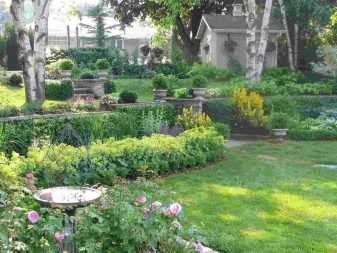
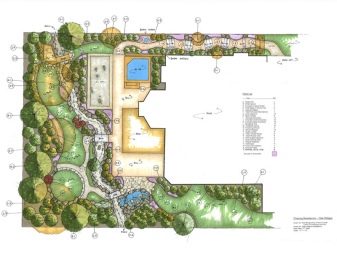
Terrain
The topography of the surface - low or high, flat or slope - plays a decisive role. The conditions for the growth of plantings of different varieties and species change dramatically with height differences. Those of them that thrive on elevated hilly terrain do not grow well in the lowlands and vice versa.
The type of soil affects the fertility of plants. Good soil should be "greasy", moderately moist, moderately loose. If it contains a lot of sand, clay, limestone, the soil needs fertilization.
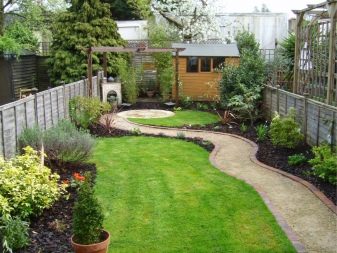
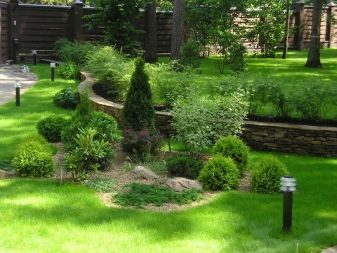
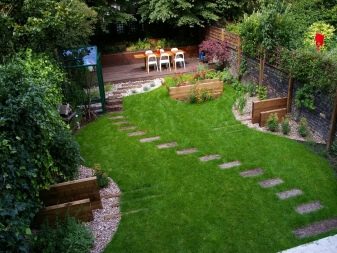
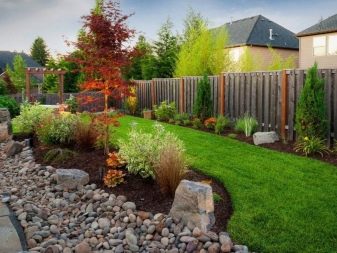
Sometimes it is even required to import black soil in order to form a new layer of earth. For dry soil, it is necessary to think over the water supply and irrigation system at the planning stage.
Geography
What matters is the climatic zone on which the site is located, as it is located relative to the cardinal points. This affects the way bushes and trees are placed, which will shield more fragile plants from winds from the north side or from the scorching sun from the south.
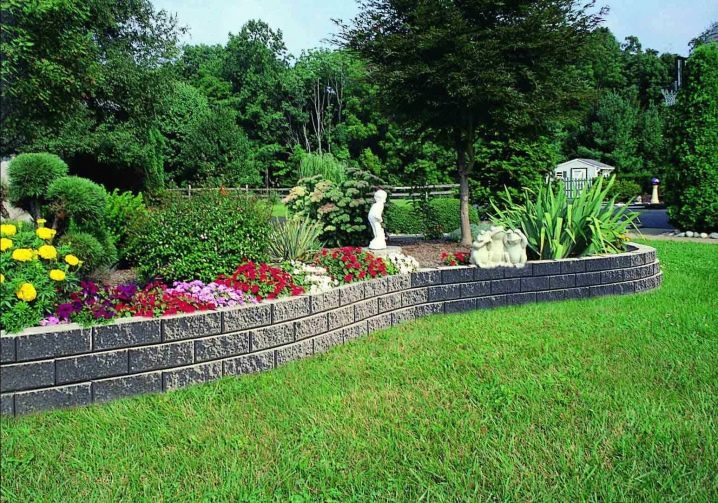
The presence of objects on the site
Personal preference is important, but there are certain sanitary, fire and building codes that require strict adherence. Without them, even the most beautiful design project will not receive approval from the relevant authorities.
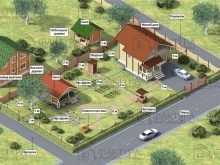
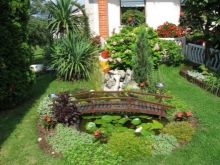
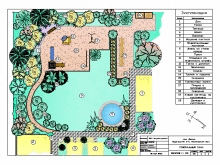
The norms regulate not only the placement of residential and business facilities, but also the location of bushes and trees in relation to underground utilities. Their distance from buildings, paths and buildings. Some of the points are advisory in nature, but many are mandatory.
The finished plan should contain detailed information about the changes made on the site, the estimate and the timing of the work
The diagram shows all the main and additional objects in the relationship, including communications.

Budgeting
Solving problems as you get it is a bad principle when it comes to financial costs. The visual and practical part of the design project for the garden must be completed by the beginning of the summer season, since frost and heavy rainfall are not the best allies for any outdoor work.
It is important to calculate in advance all the terms, the necessary materials, payment for the services of professionals and minor expenses. Provide a small supply of funds so that work does not stop due to lack of finance.
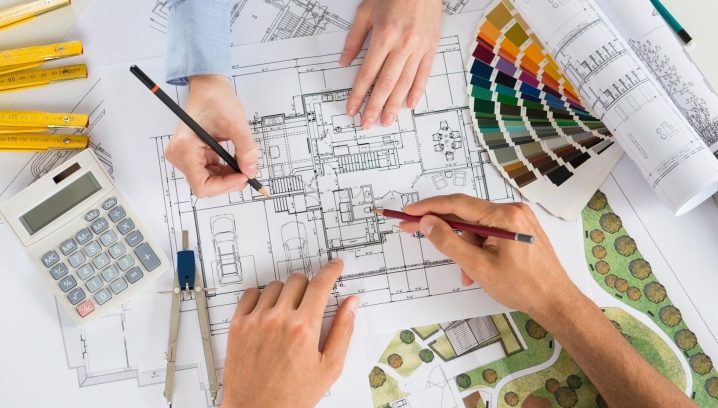
Filling the garden
Perhaps this is the most enjoyable stage in the design. When the project is ready, permission is received, everything you need is purchased, all you need to do is start to create beauty on your site. It is more pleasant only to admire the blooming creation of your hands from the gazebo.


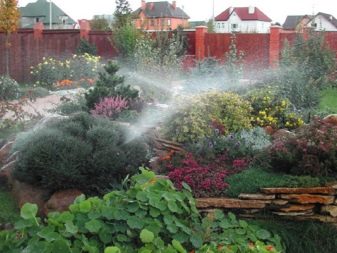
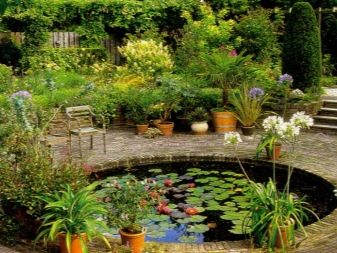
Zoning
The division of the garden into sectors is a fundamental point. The fertility of the crops grown depends on the successful choice of a place for the beds. Accordingly, economic efficiency increases, because vegetables and fruits from the dacha are stored for almost the whole year. And it's just nice when chores in the garden bring good results.
The three whales on which fruitful gardening is built are the terrain, the composition of the soil and its moisture.

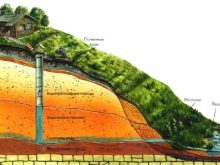

Site relief
Not all elevation changes, slopes are suitable for vegetable growing, growing fruit crops and growing flowers. Do not set up a garden or vegetable garden in lowlands, hollows, especially narrow and long ones. The temperature in them is always lower due to stagnant cold air, and the soil is too moist. In such an area, the plants will die from frost or rot.
A flat plane is least susceptible to temperature fluctuations, has the most uniform moisture content and soil composition throughout the entire area. With the appearance of a slope, the temperature regime changes at its different heights.
Every 100 meters upwards gives a decrease in the average annual temperature by half a degree or a degree. This seems like an insignificant difference, but for some plants it can become fatal in the first frost.


For most plantings, the best option is a not very flat, but not entirely flat area with an orientation to the southwest and southeast. The lower part of such an area will be more humid, shady and cooler. It is more suitable for shade-loving plants that require a lot of moisture.
As it rises, the land will become drier, and the temperature will be higher. The very top will warm up in the sun faster and more efficiently. It is convenient to plant vegetables and berry crops in ascending order in accordance with their needs for sun and water.
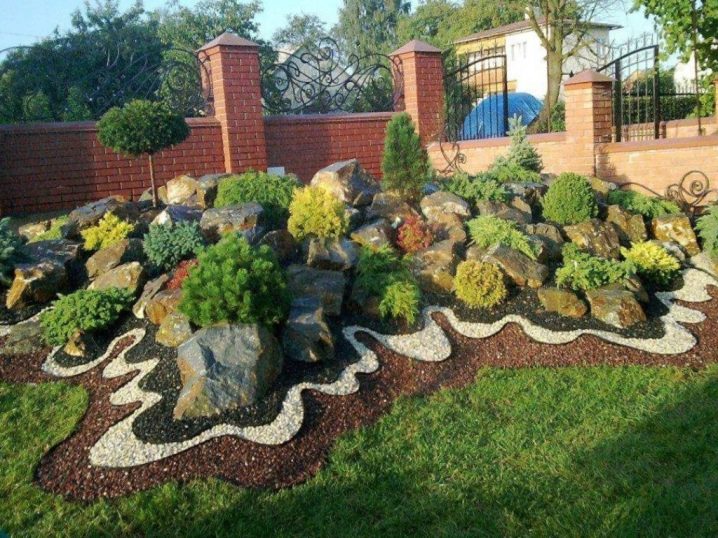
Climate of the region
In the north-west of the country, the slope with the south side is considered the most suitable for an orchard, taking more to the west than to the east. On the Ural and Siberian slopes, on the contrary, you need to choose the eastern side to protect yourself from the harsh manifestations of the climate. The southern, mountainous regions in any area have the same problem - a lack of moisture. A flat area or a gentle slope with an irrigation system is optimal.
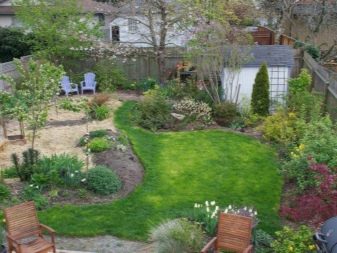
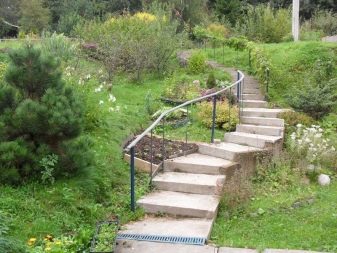
Soil and subsoil composition
Choosing a suitable environment for the development of the root system of plants is a job for a specialist.
If the initial assessment of the site can be carried out by the inspection method, then an agrochemical analysis is required to determine the composition of the soil, subsoil and underlying rocks.
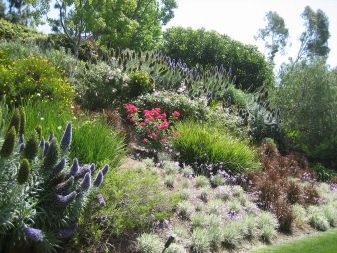
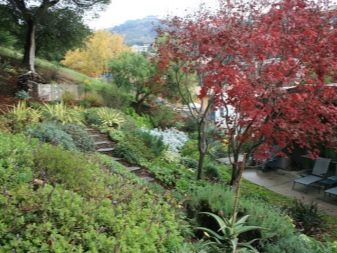
Fortunately for gardeners, soil type is not a sentence. Fertilizing, plowing, or forming a new layer of black soil today are affordable services that are often used by owners of private gardens.
Good soil is permeable to water and air - it has a loose structure. Suitable for cultivation of crops: slightly podzolic, loamy, sandy loam, gray compositions of the earth. Gardens are also easily created in the forest-steppe, with a brown, chestnut and black composition.
Do not expect anything good from clay, loamy, crushed, loose sandy, and brackish soils.

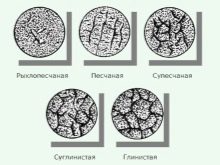

Soil moisture level
It is directly affected by the presence of groundwater. They usually nourish plants, but if they are too close to the root system, they cool the soil, saturate it with sulfates and create unfavorable conditions for growth. The remoteness of groundwater from the root system should be at least 2 meters.
The distance from the ground is considered from the species, plant variety and rootstock. For example, for apple trees on a dwarf rootstock - 1-1.2 m, and for another rootstock, at least one and a half meters is required.
In addition, the choice of location is influenced by: where exactly the vegetable garden will be planted, the microclimate of the entire site, the biological characteristics of fruit and berry crops. On uninhabited territory, you can focus on indicator plants. If oaks, maples, legumes grow well nearby, this is a good place.
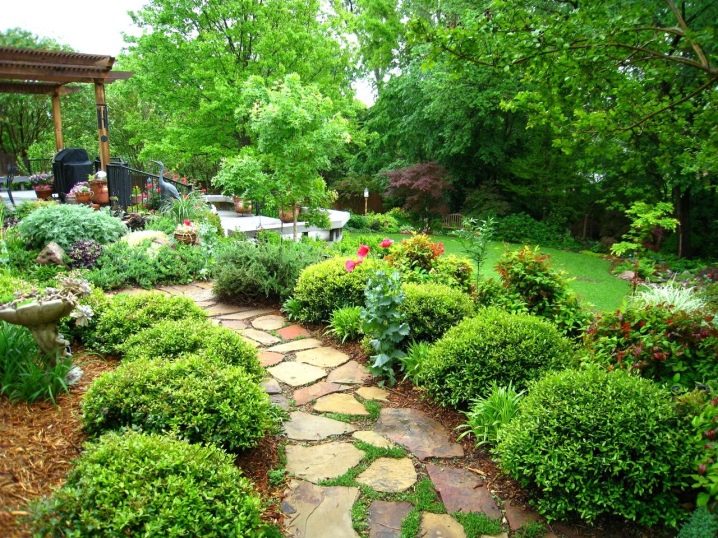
If you already have a country house and green spaces, you need to choose places to redesign the garden based on the relationship between objects and plants. For example, for light-loving plants, it is important to cultivate a front garden in front of the house. And behind the dwelling, in the shade of the walls, shade-loving cultures will feel good.
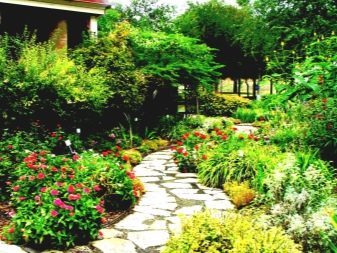
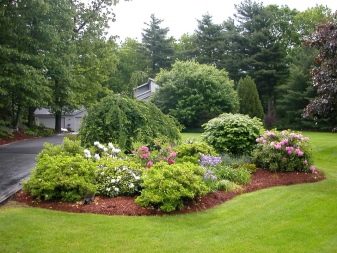
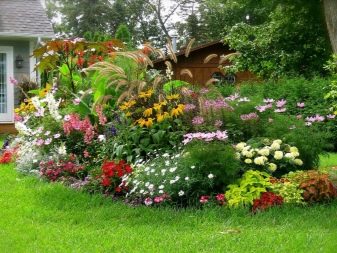
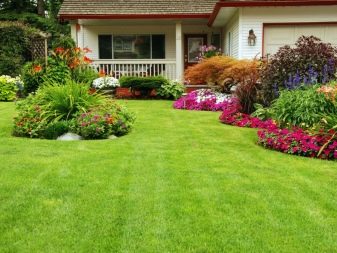
Also, in front of the house, you can plant low shrubs, focusing on the height of the window frames. Bushes and trees can be placed around the perimeter, vegetables - in the center of the site. Such vegetables as pumpkin, zucchini, cabbage like to change from time to time the place of "residence" in the beds.
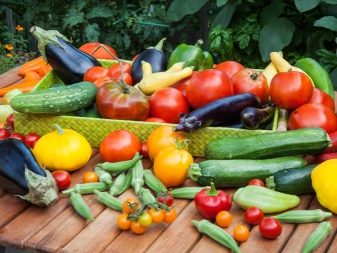
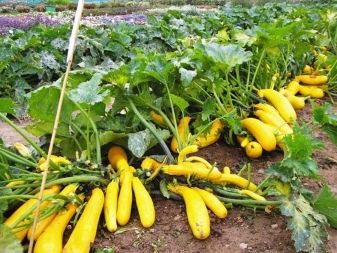
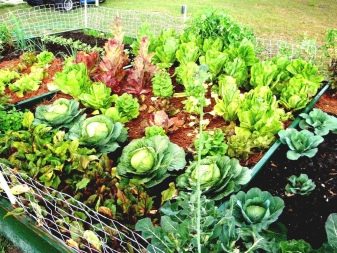

Styles
Garden design starts with a drawing and design starts with an idea. The first impulse - I want rose bushes with peonies, and in order to be beautiful, it is necessary to display it in a specific form - in the form of a landscape project. There are no immutable rules for the design of the site.
Flexible design allows you to adapt style directions to the wishes of the garden owners and the characteristics of the site. However, there are guidelines that landscape design experts recommend adhering to.

Consider the size and shape of the site. Using zoning techniques - arches, paths, height differences, green hedges - you can correct the irregular shape of the site, create a more harmonious landscape.
It is worth choosing plants not only for personal preferences, but also for their ability to take root in specific living conditions. Relief, humidity, soil type, average annual air temperature play a role here.
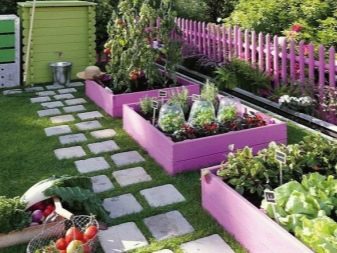
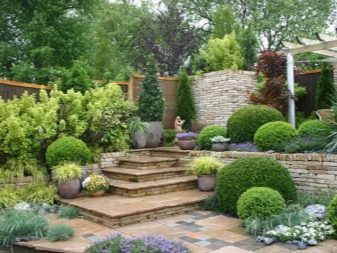
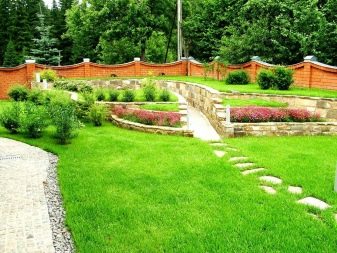
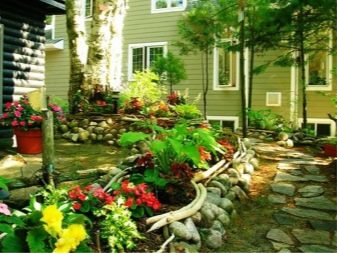
It is also important to consider how unpretentious the crops are grown, because the garden and vegetable garden, as a rule, are located outside the city. That is, there is no way to take care of the plants every day.
Combine plant varieties correctly. It is important to consider what colors this or that type of greenery is combined with.... What flowers can help in protecting vegetable crops if they are planted along the beds in their summer cottage, and which, on the contrary, will attract pests to them. Which are capable of creating symbiosis or will interfere with the full growth of each other.
Match colors correctly. The working rule - to combine no more than three colors does not apply to landscape design, too often the living nature in the neighborhood has different shades. But this is not a reason to rush to extremes and mindlessly combine all your favorite flowers in a rainbow palette.
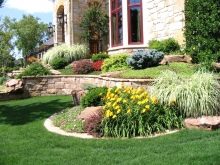
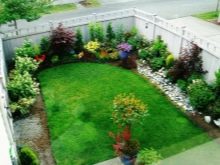
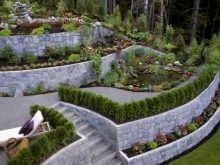
There are several options for making your garden beautiful.
- The emphasis is on greenery, not flowers.
- The combination of colors based on the principle of complementarity.
- Selection of color zones.
- Garden decoration in the same range, but in different shades.
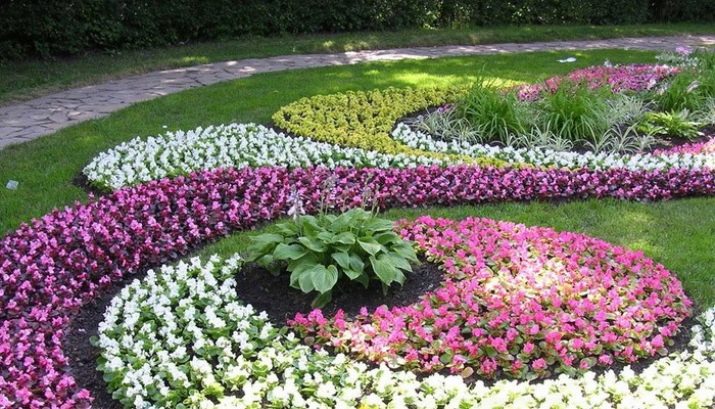

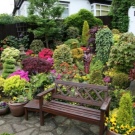
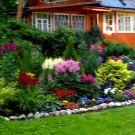
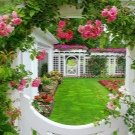
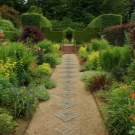
- Consider the architectural style of buildings on the site. Ornamental gardening cannot be an isolated phenomenon on the site. It should be a harmonious backdrop for a residential building and recreation area.
- Draw a plan and stick to it. A visual scheme of planting plants greatly simplifies the task of decorating a garden. The location of all sections of the lawn, bushes, trees, flower beds, arches, hedges, beds should be marked on it.
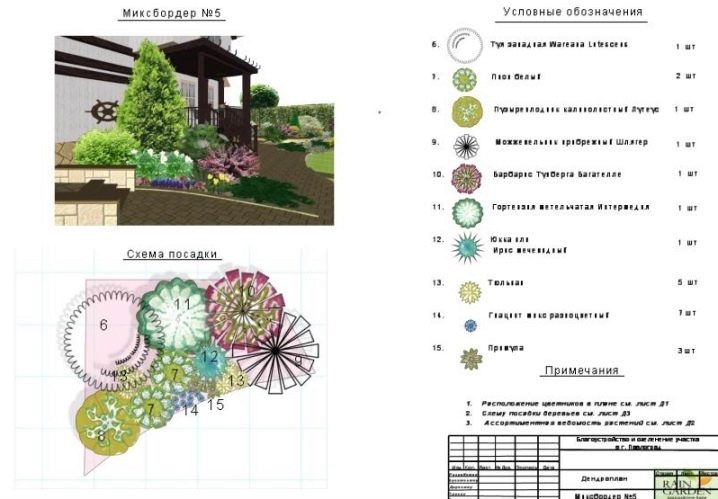
It is good if color spots are marked on the diagram. Such a plan will clearly demonstrate, for example, that the bushes are planned to be planted along the fence along the perimeter of the site, and the paths will be decorated with perennial low bushes.
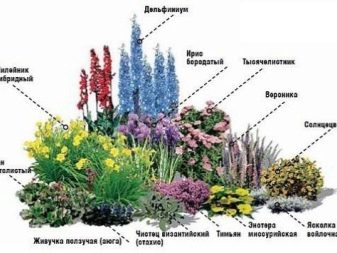
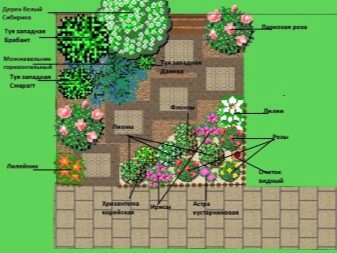
As for the styles themselves, the garden design offers quite a variety of solutions.
All of them are subordinated to two main directions:
- regular garden;
- landscape.
Regular or formal design governs classic design styles. It is dominated by symmetrical shapes, balance and strict geometry. Even architecture is subordinate to them. The crowns of trees and bushes are trimmed, the presence of lawns and stone areas is encouraged.
A characteristic feature of a regular garden is the presence of a central alley. The color palette is laconic: greens of different shades are used, white, light and red palette.
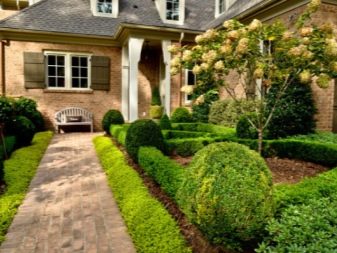



Sometimes a regular garden is called traditional. Common accessories: fountains, columns, flowerpots, sculptures... A classic border, forging, benches with backs, ornaments made of natural stone are used. The arrangement of the accessories is central or strictly mirrored.
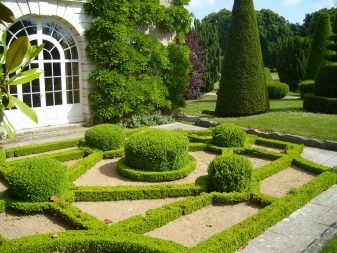

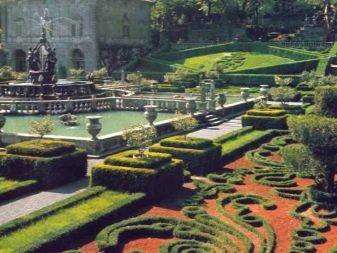
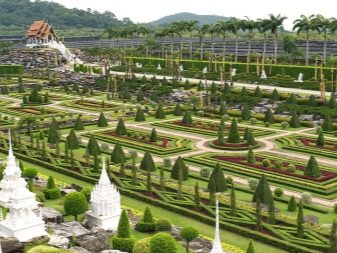
The landscape style puts naturalness first. It allows you to use all the features of the relief, it is easier to perform it without the participation of a designer. It is important to pay attention to a balanced combination of colors, to keep the garden well-groomed.
The characteristic feature of such a garden is imitation of nature, but more accurate, orderly. Trees grow instead of columns, asymmetry is more relevant than specularity, fountains replace natural reservoirs. The forest style is close to the landscape, with a predominance of wild plants and trees..
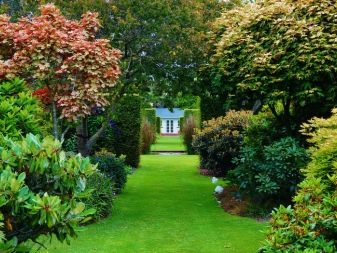
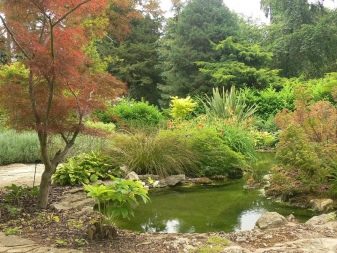

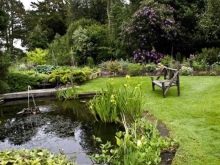
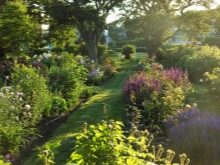
Branches of styles are narrower and more specific: English, French, Moorish, Chinese and the like.
- English... Distinctive features: lush greenery, lawn, well-groomed front garden, beautiful gate, winding paths and rolling hills.
- French... Also Provence style is often referred to it. The cultivation of aromatic herbs can become the highlight of such a garden. In summer, they look beautiful on the beds and spread the aroma, and in winter they perfectly complement homemade dishes. In addition to them, it is important to use natural decorations, an abundance of small flowers and decor. Purple and pink shades are required.
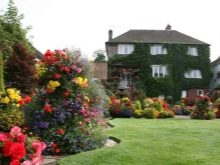


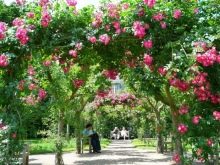
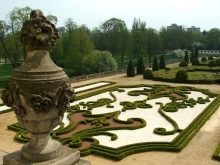
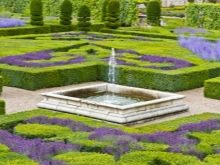
- Mauritanian... Its basis is the presence of a central element. In the middle of the site, a fountain, a pond or a recreation area with a gazebo breaks down, and a green composition of all shades is built around. It is not worth leaving open plots of land. Where there are no plantings, paths are laid out with stone or tiles.
- Japanese... A rarity in garden design is the use of traditional Japanese architecture, perennial flowering trees (deciduous), decoration with pebbles, moss and stones, aqueducts and fish ponds.
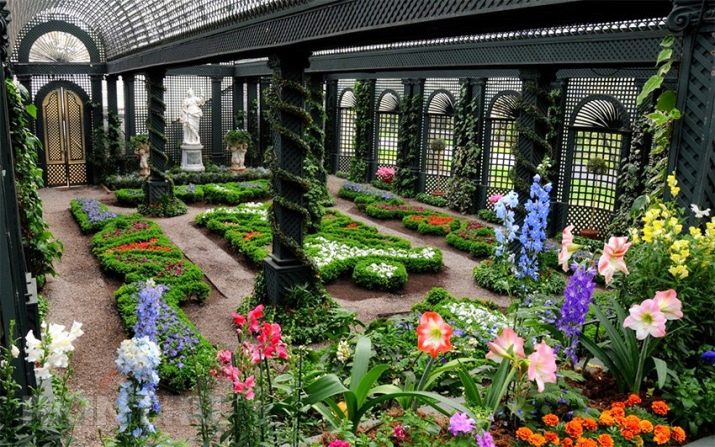
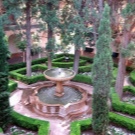


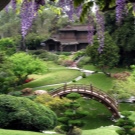
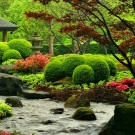
- Chinese... Despite belonging to the Asian region of this and the previous style, they have their own characteristics. So, the Chinese is characterized by a complex landscape solution, implying versatility. The garden should be decorated so that it looks different from different vantage points.
- Country or Rustic the style is one of the easiest to execute, since in its essence it is as close as possible to nature. Nature acts as a decoration around a beautiful house, and at the same time allows you to organize the space with maximum benefit. Fruit trees, dense plantings of flowers and crops, earthenware sculptures, wicker and wooden decorations are typical rustic elements.

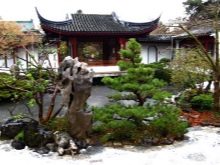
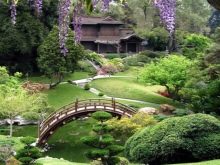
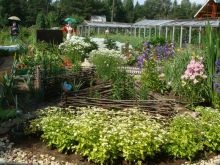
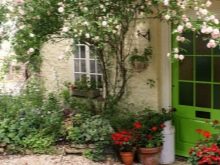
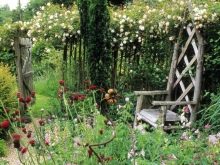
- Italian style... Its main feature is the presence of a patio, hidden from view in the depths of the site.
- Modern... Asymmetry, contrasting colors, the use of non-trivial architectural forms from different materials, night illumination.
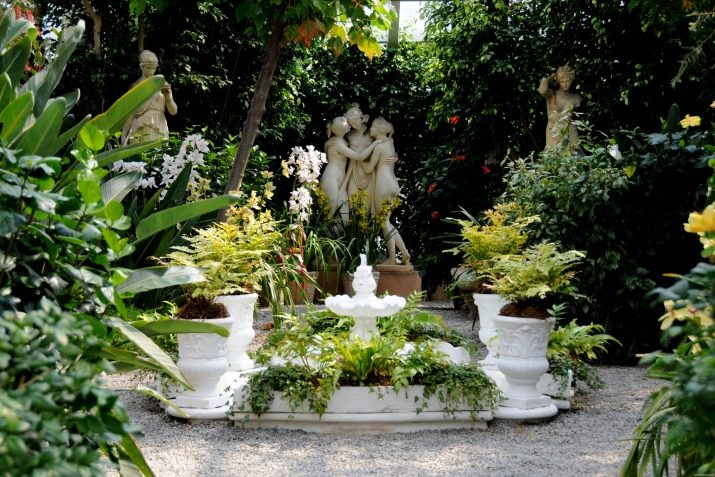
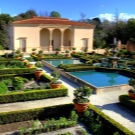
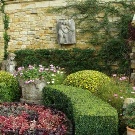
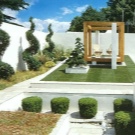

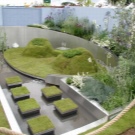
- Eclecticism... Competent combination of several styles.
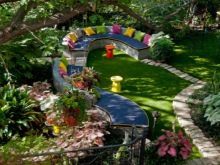
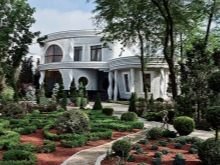
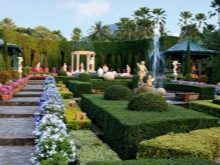
We decorate flower beds
Types of gardens - categorization is quite complex and different from styles. Here it is not about the appearance and design, but about the correspondence of the style to the functions of the garden. A modern garden has several types of functions.
Relaxation function - the garden is used only for recreation, trips out of town for family or friendly barbecues, sunbathing and fishing.


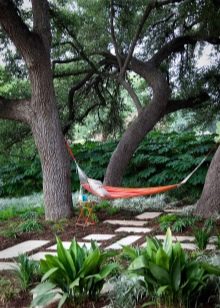
Aesthetic function - is necessary for the development of harmony with nature. This is a social function that introduces a person to work and functioning in a gardening partnership.
Economic function - allows you to use the land as a source of food for the whole family.
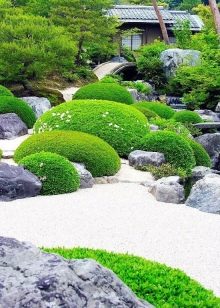
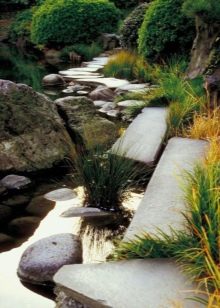
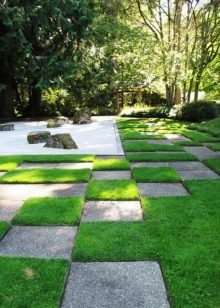
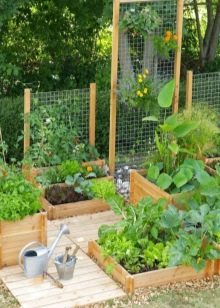
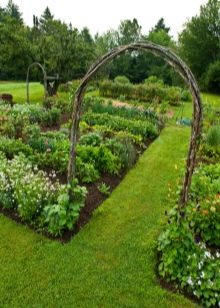

In accordance with what functions the garden should perform, it can be of the following types:
- decorative;
- fruit;
- vegetable;
- mixed.

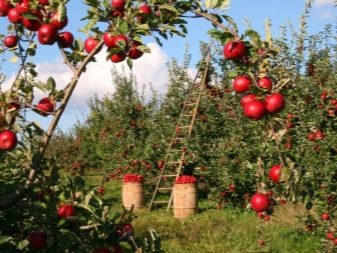

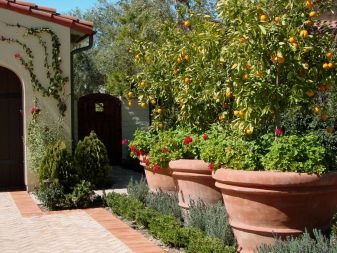
Decorative
Such a garden is for relaxation only. The ratio of zones differs from the traditional one: not 70%, but about 50% are allocated to green spaces. A recreation area prevails in it. It combines two functions - relaxation and satisfaction of aesthetic needs. Mainly trees, flowering bushes and flowers are bred in such a garden.
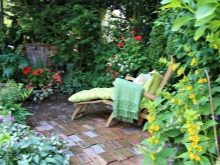
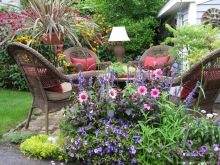
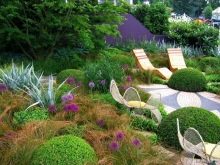
One successful example is the heather garden. Heather is an unpretentious plant numbering several dozen varieties that perfectly combine with each other and with other flowers. Does not require special care, blooms beautifully and for a long time, is perennial and takes root on the most infertile soils... A distinctive feature of this plant is its amazing aroma.
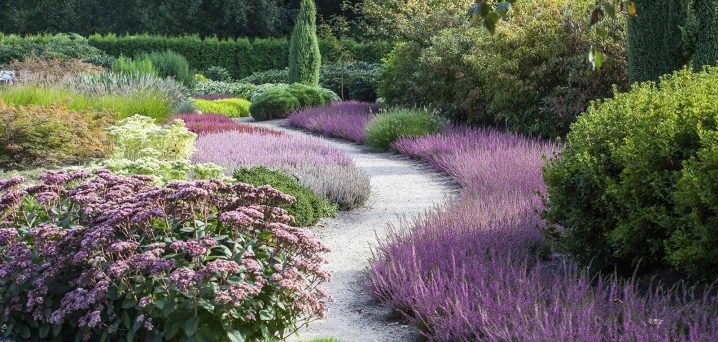
Fruit
If not all garden owners are ready to stand with a shovel over the beds, then many would like to have fruit trees on the site. Caring for them is simple, the main thing is to fertilize the soil, water in time in dry weather and protect the tree from parasites.
In many regions of the country, the climate is suitable for growing pears, apples, plums, cherries. In the southern regions, the list is replenished with apricots, peaches, walnuts and other thermophilic fruits. Fruit trees begin to harvest from 2-3 years of age.
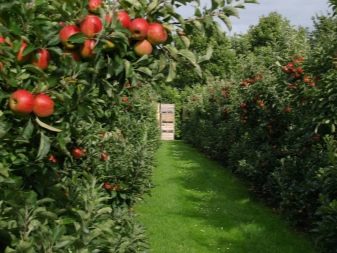
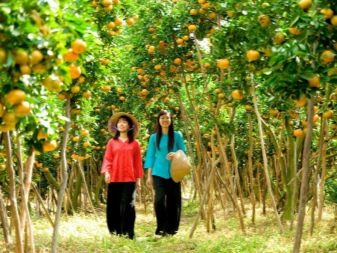
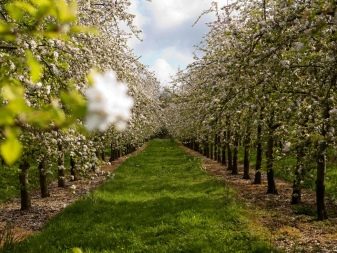
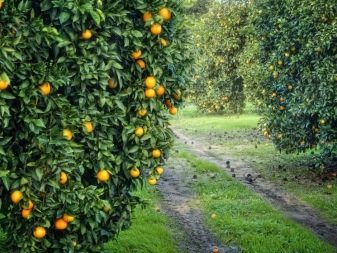
Vegetable
A very common option among those who like to stock up on vitamins for the winter and do not mind caring for the beds. You can grow a lot: potatoes, carrots, cabbage, including cauliflower and broccoli, greens.
Preference may be given to eggplant, pumpkin, squash, legumes, or berries. A garden like this requires a lot of maintenance, but the result is worth the effort.
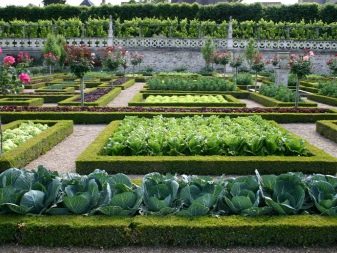

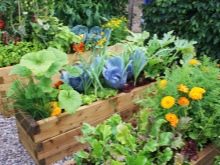
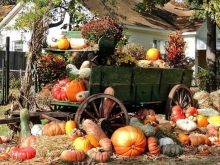
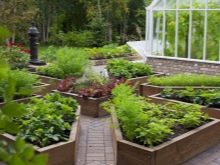
Mixed
The most common option among thrifty Russians. It implies the use of a garden plot for growing flowers, vegetables and fruits.
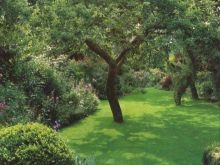
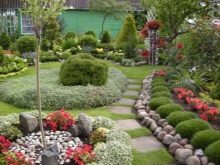
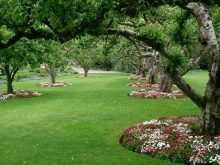
Choosing plants
The choice of flowers and shrubs for landscaping determine the atmosphere and illumination of the area.With the help of large plants, you can both revive the composition and ruin a beautiful idea. In the choice of varieties, they are guided by personal preferences and style direction.
The traditional style is characterized by an abundance of greenery of various varieties: spray roses, daisies, freesias, dahlias, asters, peonies, hosts, geychera, phlox.

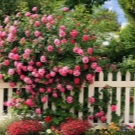
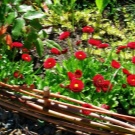
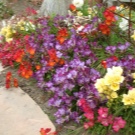
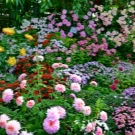
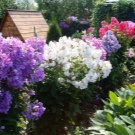
Various conifers and unpretentious flowers are suitable for a forest or rustic style. For example, chamomile, cabbage, sunflowers, meadow plants. Coniferous ornamental trees and shrubs take root well and look.
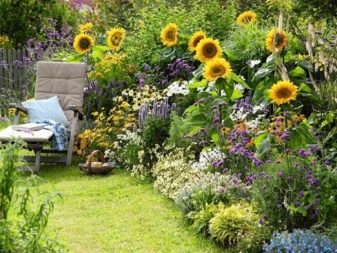
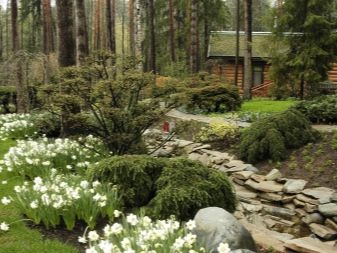
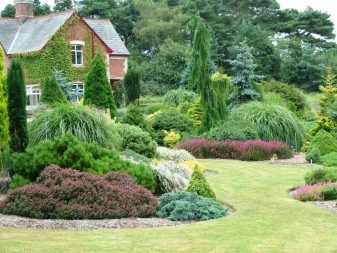
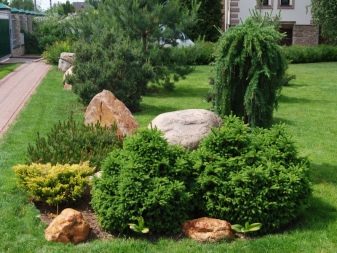
French Provence abounds in pink, purple and lilac shades, an abundance of small flowers. For decoration, it is important to use lilacs around the perimeter, and plant arabis and eustoma, irises, clematis, verbena, heather or forget-me-nots on the flower beds. Blue, lilac, purple hydrangea is also suitable.
Fragrant greens as an addition will become the highlight of the garden - rosemary, basil, mint, sage, oregano.
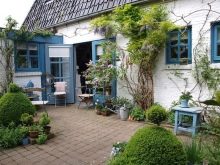
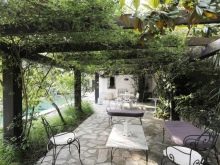
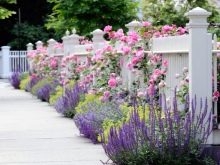

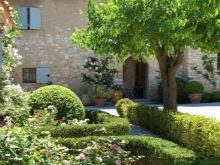
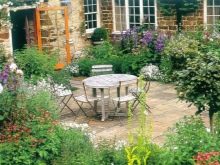
For Dutch gardens, daylilies (alstroemeria, lilies, agapanthus and others), tulips, peonies, gladioli serve as filling.
Any garden can be diversified with climbing plants: wisteria, sweet peas, bougainvillea, clematis, nasturtium.
Unusual flowers also attract attention: bright alyssum, poppies, astilbe, succulents, heuchera. Isel Fastigiata, Erecta barberry, lobelia and marigold are used.
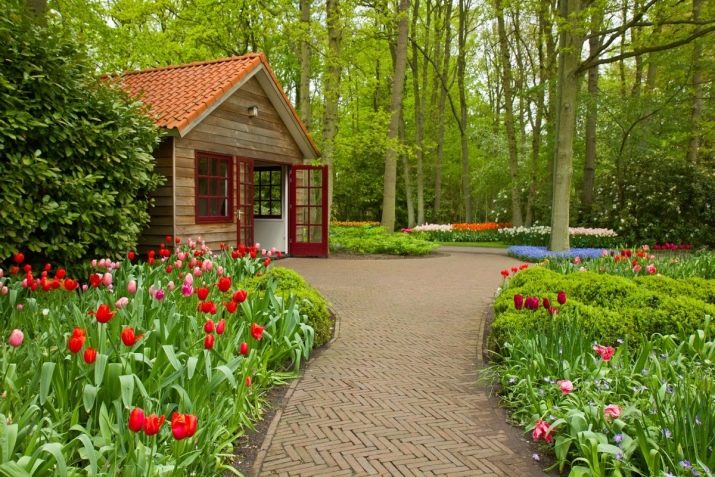

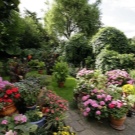
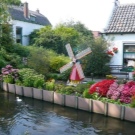
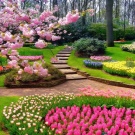

Decor elements
In the recreation area, the required minimum: a place for placing a smokehouse or barbecue, a table, benches or chairs, a gazebo or a canopy. For the garden, it is important to use plastic furniture that does not deteriorate in different weather conditions, as well as wooden objects. Home-made furniture from hemp, boards, pallets, old car tires looks beautiful and original.
A nice bonus for giving is a hanging swing with a back and a hammock. If there is free space, it is advisable to equip several such places, since they are in great demand among guests and households.
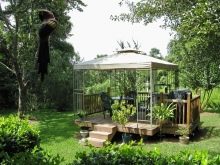
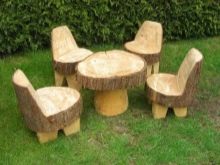
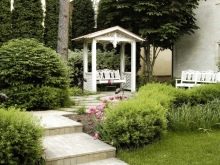
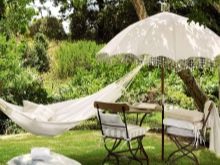
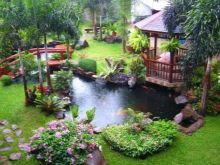
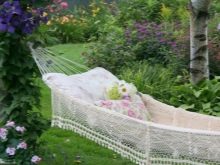
Garden decoration accessories are also needed. These can be factory-made products made of ceramics, plaster, wood, metal, or do-it-yourself items from things that have outlived their days. For example, a fruit basket can replace a flowerpot or turn into an original wicker shoe for planting plants, colored tires are ready-made flower beds, and an old bicycle can be an original multi-level stand for containers with flowers.
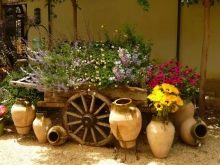
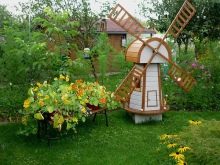
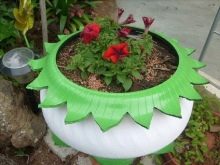
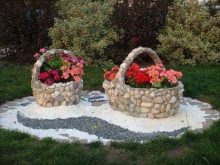
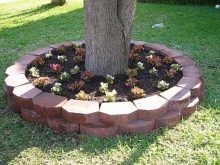
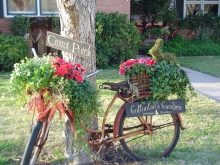
Combination rules
When combining landscaping styles, it is important to consider the size of the site. It can be small, medium and large. The value is sometimes determined by eye, more often by geodetic and agronomic instruments.
Medium plots are versatile and the easiest to design. It is convenient to place buildings and decorative elements on them without violating sanitary standards, fire safety rules, and without damaging plants.
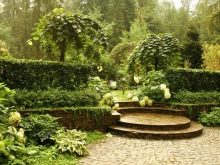
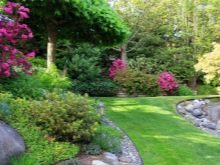
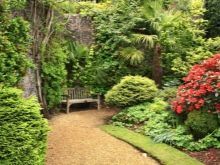
In large areas, the design is more complex, since there should be no voids left, and filling requires more resources and effort.
Small plots suffer from a lack of space for a complete garden. They often try to pile up a large number of different plantings, resulting in a botanical hodgepodge.
To avoid such a mistake, you need to use proven compositional tools to rationally increase the space.
Some of them help to free up useful space, while some work only for the visual effect. The first group includes the use of one-and-a-half and two-story buildings, terraces and stepped landscape design. At the same time, living quarters can be either built on with an attic or a second floor, or deepened with the help of cellars and basements.

As a visual increase in space, landscape design experts advise using numerous techniques:
- Avoid straight lines in the layout... The geometry of the traditional garden style is not prohibited in small areas, but it must be understood that the practical usefulness of the land will be greatly affected. The garden will be primarily decorative rather than supplying fresh vegetables and fruits to its owners.
- Hide parcel boundaries... A blank fence sharply outlines and compresses the boundaries of the garden. You can visually move them apart using a fence with gaps - a classic wooden one, a chain-link mesh, a colored mesh.
Such a fence will be an excellent base for the placement of climbing plants. An alternative option is bushes. But here you need to remember that it is not always possible to plant them close to the neighbor's fence.
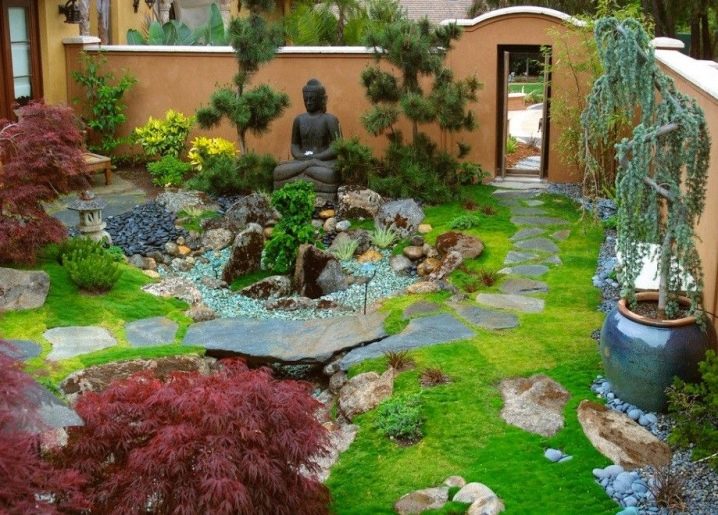
- Green lawn... At the entrance to the site, this purely English trick works with a bang. An extensive color spot, instead of flickering different colors, visually stretches the area of the earth.
- Using a concise palette... The less variegation on the site, the more solid it looks. And the lack of fragmentation is perfect for enlarging small areas.
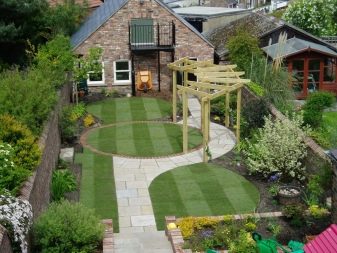
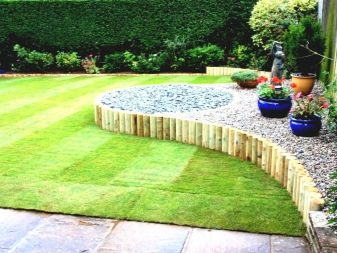
- Green area without lush flowering flower beds not necessarily boring. You need to use complex shades, plants of interesting shapes, different sizes. However, many of them can be useful in the kitchen and in the medicine cabinet.
- Alternative option - choosing one color... For example, a garden looks great, where all the flowers are selected in blue, red or orange.
- Winding paths and paths... The more they zip, the larger the garden seems to be.

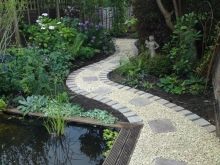
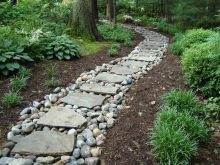
- Distribution of light accents... The technique, alas, is not universal, since during the day artificial lighting will not give any effect, but in the evening it is very effective. It is useful here to use architectural lighting of the house, spotlights with rays directed upwards, lawn lamps with legs and in the form of balls.
- Water mirror... Everyone knows the magical effect of reflective surfaces in small rooms. In nature, their role is played by artificial reservoirs.
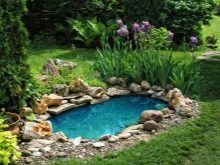
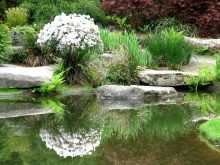
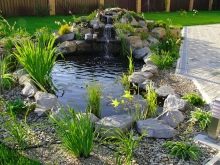
- Greening vertical surfaces... You can "stretch" the garden not only in width, but also in height with the help of arches, nets and climbing plants. It's nice, zoning-friendly, and creates extra volume.
- Stepped decor and terraces... The multilevel placement of decorative elements and terraces for plant breeding works on two fronts at once - a practical increase in the area and a visual one. Plus, it's just beautiful. Relevant on sloping areas.
- Using fractals... Repeating silhouettes and shapes add integrity and harmony to the composition.
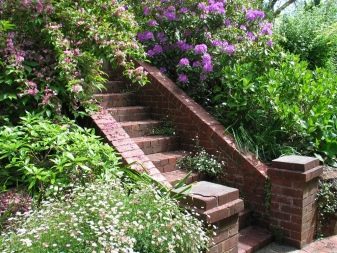
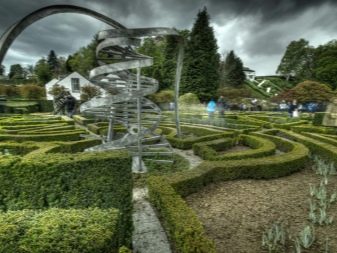
- Elongated silhouettes... Small architectural forms and trees should aim upward so that the view covers more space.
- Eye-catching accents... On a small area of the correct shape, it is important not to get stuck on its borders. Using decorative elements in the most unexpected places - from fountains to benches - helps to distract attention.

Landing patterns
Garden parameters play an important role. In official documents, they are recorded as an area, which is measured in meters or hundred square meters. It is difficult for novice gardeners to determine the dimensions required for a summer cottage. It seems to some that 6 acres is enough, and then they have to choose between cauliflower and the usual variety for winter stocks, because there was not enough space for everything.
Others swing 20 acres at once, so that there is a place for barbecues, and there is enough land for vegetables. This is also a mistake. If you cannot accommodate a huge country cottage for the whole family on 20 acres, then you will have to deal with the processing of vegetable crops from dawn to dusk with a barbecue in your teeth.
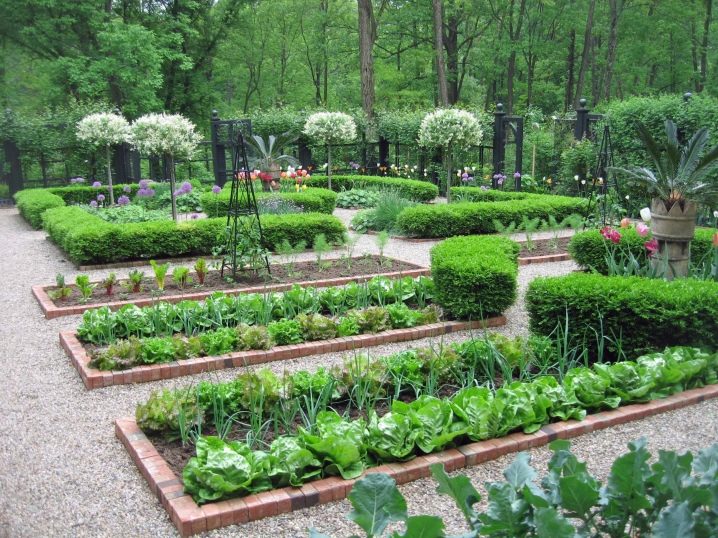
The golden mean is considered to be a plot with an area of 10-12 acres with correct zoning. It is not enough to decide that "here there will be a beautiful house, and in that corner of the apple tree", the choice of the purpose of each sector is carried out according to the rules that must be followed.
Consider the shape of the site and use the correct zoning. For this purpose, hedges made of bushes and trees, paths, decorative elements, arches are suitable. It is necessary to use the full potential of climbing and perennial plants.
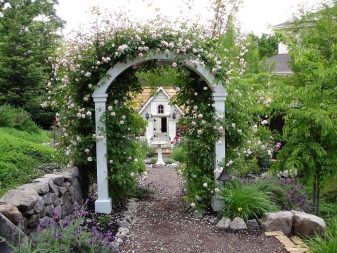
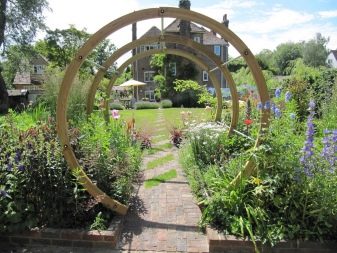
It is rational to divide the land into parts. As practice shows, the "golden formula" looks like this: one tenth of the site is allocated for living quarters, one - for outbuildings, one and a half for the recreation area, and the remaining 6-7 - for gardening. In total, it turns out about 65-70% of the land for gardening needs.
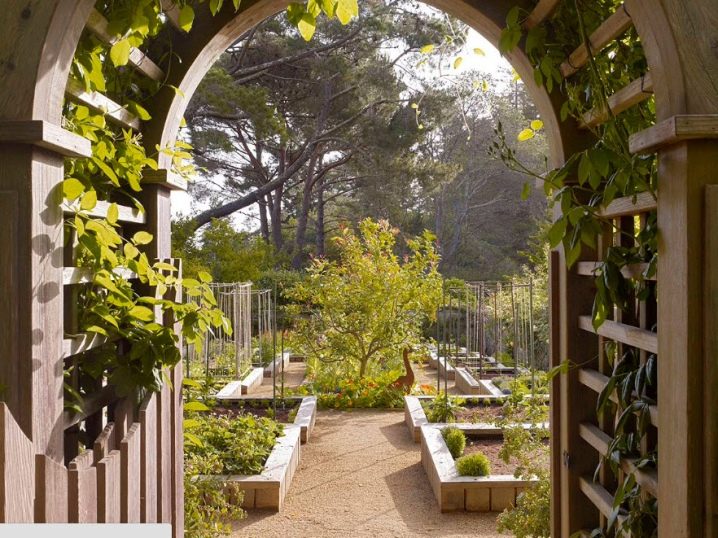
Maintain distance between objects. It is necessary for health and safety reasons. The following two rules follow from this:
- Accounting for sanitary standards - farm buildings and pens for animals should be located 10-12 meters from the house.
- Accounting for building codes. The placement of bushes is allowed at least 1 meter from a fence adjacent to neighbors, trees - 2 or 3.
- Take into account the cardinal points and the geography of the region in order to arrange the plants as they feel comfortable under sunlight and in the shade.
- Ensure safety in the playground and recreation area.

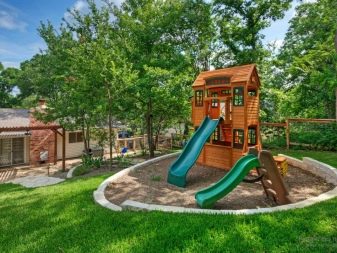
Useful Tips
The main tricks of lazy gardeners to keep their beloved garden in excellent condition is to properly prepare the site for wintering:
- to establish supports for branches that have dropped under the weight of the fruit so that they do not break: they cannot recover during the winter;
- timely harvest and plant plants;
- carry out the processing of plantings from pests;
- feed perennials with phosphorus-potassium fertilizers before winter.

Photo gallery: spectacular examples
The key to a beautiful design of the garden and the space around the country house or estate is the development of a quality project and the presence of an idea. Also, for the formation of beautiful courtyards, it is important to observe the principle of a harmonious combination of objects on the site with each other and with the surrounding nature.
The following techniques work flawlessly to create a beautiful and unique design:
- Use of all the features of the "problem" areas with benefit.
- Construction of a balcony or attic on the top floor of the house, a closed veranda or terrace on the bottom.
- Preference for natural materials when choosing accessories and furniture: wood, stone, textiles.
- The presence of unusual accessories of the DIY format - do it yourself.

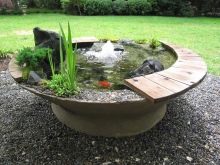
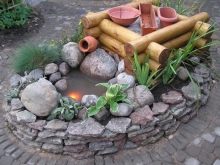
Use the possibilities of your own imagination or choose suitable examples from the Internet. You always have the opportunity to create a unique image of your garden, even without expensive elements, on your own.

Useful tips for creating a garden design await you in the next video.



































































The comment was sent successfully.